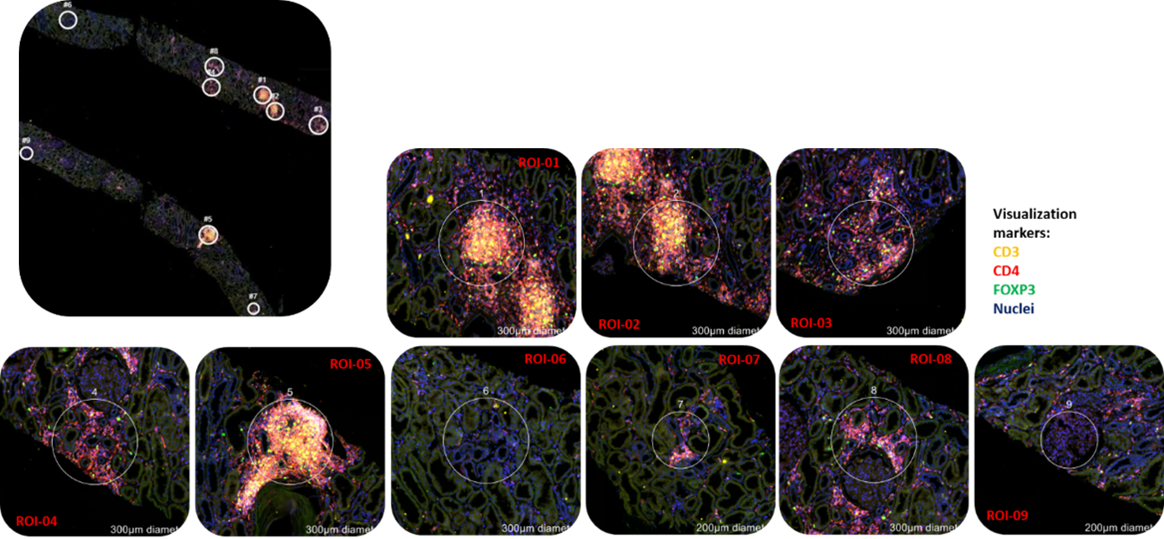Spatial protein profiling of leukocyte infiltrates in renal biopsies after cellular therapy
Alaa Alzhrani1, Matthew Brook1, Joanna Hester1, Fadi Issa1.
1Transplantation Research & Immunology Group, Nuffield Department of Surgical Sciences, University of Oxford, Oxford, United Kingdom
Background: Regulatory T cells (Tregs) are powerful modulators of immune function, and are of increasing interest as an adoptive cellular therapy for the treatment of transplant rejection. Elucidate the impact of Treg therapeutics in vivo is crucial to identify the therapeutic efficacy. This study aimed to examine the infiltrated leukocytes to provide a clearer picture of the dynamic process that occurs in the transplanted tissue after cellular therapy compared to rejection.
Methods: Cellular infiltrates were assessed by GeoMx digital spatial profiling (DSP) platform in tissue biopsies from three transplant patients who received Treg therapy and two control patients with confirmed rejection, with biopsies taken at similar time points after transplantation (6-12 months). Various regions of interest (ROIs) were selected (9 -12 regions) from each patient with diverse infiltration types (Figure 1). In addition, FOXP3hi CD4+ and FOXP3low/neg CD4+ regions were selected from both groups to assess the protein signatures of these cellular infiltrates.
Results: The FOXP3 signal was highly enriched in regions from cell therapy compared to rejection patients, suggesting that infused Tregs are likely homing to the allograft. The B cell marker CD20 was highly expressed in cell therapy ROIs than in rejection ROIs, suggesting a link between infused Tregs and allograft infiltration by B cells. Conversely, the rejection ROIs have a high expression of Ki67, indicating the presence of highly proliferative cells. The monocyte/macrophage markers CD14, CD68, and CD163 were also enriched in the rejection ROIs, suggesting that macrophages may be associated with graft rejection in these patients. Further analysis revealed interesting differences between the cellular infiltrates in FOXP3hi segments from cell therapy patients compared with rejection group such as enrichment in proteins related to signalling, including STAT3 and p-STAT3, and coinciding with enrichment in regulatory molecules, including CTLA-4 and PD-1. VISTA protein was found to be highly enriched in FOXP3hi segments from cell therapy patients, suggesting that VISTA might play a regulatory role in suppressing the alloimmune response. Our analysis suggests that FOXP3hi cells that are present in regions collected from rejecting patients are likely suppressive Tregs, since FOXP3hi cells coincide with enrichment of Tregs-associated markers. Nevertheless, these Tregs failed to control the alloresponse, as demonstrated by the enrichment of CD8 T cells, which were notably represented in FOXP3hi regions in rejection tissues.
Conclusion: The GeoMx DSP allowed for an in-depth analysis of leukocyte infiltrates and provided comprehensive information about the molecular processes associated with stable renal allograft in patients receiving Treg therapy, which in turn may assist in understanding the mechanisms of therapeutic immune regulation and optimal timing for immunosuppression minimisation.


right-click to download
